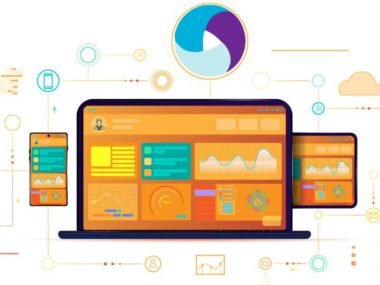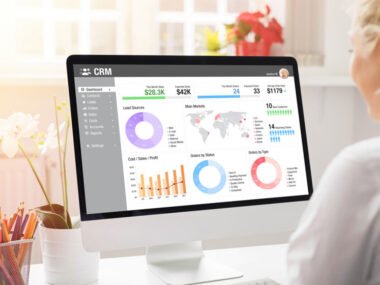In today’s digital-first landscape, businesses generate massive amounts of data daily. However, raw data alone cannot drive decisions or strategies. It is through Data Analytics and Visualization Services that businesses transform data into actionable insights, paving the way for improved decision-making and innovation. With rapidly advancing technologies like IoT and Generative AI for Business, data insights have become more accessible, precise, and valuable than ever before. This blog explores the core concepts of data visualization, the critical role of analytics, and how companies, including an IoT company or those leveraging generative AI, can maximize their potential using these tools.
The Value of Data
Data is often referred to as the “new oil” in the modern business ecosystem. However, its true value lies in how effectively it can be analyzed and visualized. Through Data Analytics and Visualization Services, raw numbers are transformed into interactive graphs, charts, and dashboards, enabling businesses to identify patterns, forecast trends, and make data-driven decisions. The ability to understand data visually empowers decision-makers to act swiftly and confidently, leading to better outcomes across all departments.
Moreover, with the integration of IoT, businesses can gather real-time data from connected devices. This influx of data, when visualized effectively, provides actionable insights into operational efficiency, customer behavior, and market trends. Similarly, Generative AI for Business allows organizations to automatically generate reports, visualizations, and predictions, saving time and enhancing precision.
Types of Data Visualization
Data visualization can take various forms, each suited to specific types of data and analysis needs. Common types include:
- Bar Charts: Ideal for comparing categorical data across different segments or periods.
- Line Graphs: Effective for tracking changes and trends over time, such as sales growth or website traffic.
- Scatter Plots: Useful for observing relationships and correlations between variables, like marketing spend versus ROI.
- Heat Maps: Great for visualizing data density and identifying hotspots, often used in geographical and behavioral analytics.
- Tree Maps: Simplifies hierarchical data into proportional blocks, helping teams understand resource allocation or budget breakdowns.
These visualizations are not merely static images but interactive tools that allow businesses to explore data dynamically. Advanced tools like Tableau, Power BI, and Looker offer functionalities that bring data stories to life, enabling deeper exploration and more meaningful insights.
How Visualization Will Change the Way One Thinks About Business
Visualization simplifies complex datasets, making it easier for teams to:
- Spot trends and anomalies quickly.
- Enhance communication and storytelling using visuals.
- Foster collaboration by providing a clear and shared understanding of business metrics.
For instance, sales managers can use real-time dashboards to monitor team performance, while marketing teams can visualize campaign success across channels. Additionally, financial analysts can create visual forecasts to predict market fluctuations. This approach shifts the mindset from reactive to proactive, encouraging businesses to plan and innovate based on data-driven insights.
How Data Analytics Enables Businesses to Gain Rich Profits
Through advanced Data Analytics and Visualization Services, companies can:
- Identify High-Performing Products: Analyzing sales data reveals which products are driving revenue, enabling strategic focus on profitable items.
- Optimize Pricing Strategies: Historical data can inform optimal pricing models, balancing competitiveness and profitability.
- Enhance Customer Experiences: Understanding customer preferences allows companies to offer tailored solutions and improve satisfaction.
For instance, an IoT company can analyze device usage data to refine its offerings, while leveraging Generative AI for Business to automate predictive insights. By combining analytics with visualization, businesses can uncover hidden opportunities and capitalize on them effectively.
How Organizations Can Get Richer Benefits Using Data Analytics
Organizations can unlock significant benefits through analytics, such as:
- Operational Efficiency: Automating repetitive tasks and processes with data-driven systems reduces errors and saves time.
- Enhanced Customer Insights: Detailed analysis of purchasing patterns and feedback helps design better marketing campaigns.
- Risk Mitigation: Predictive analytics identify potential threats and enable businesses to take preventive measures early.
These advantages help businesses stay agile and responsive in a dynamic marketplace. For example, a retail chain could use analytics to manage inventory more effectively, while a logistics firm could optimize delivery routes to reduce costs and improve customer satisfaction.
The Role of Big Data Summarization in Increasing Lead Generation
Big data, when summarized effectively, offers the following benefits:
- Better Targeting: Identifying potential leads through detailed customer segmentation based on behaviors, demographics, and preferences.
- Scalability: Analyzing large datasets quickly to support expanding businesses in identifying and addressing new market opportunities.
- Improved ROI: Reducing the cost-per-lead by focusing marketing efforts on high-value prospects.
By integrating these insights with Generative AI for Business, organizations can achieve enhanced precision in lead generation efforts, tailoring campaigns to reach the most promising customers.
Conventional Summarization vs. Records
Traditional data summarization methods relied heavily on manual efforts, resulting in:
- Time-intensive processes.
- Limited accuracy and potential bias.
In contrast, modern Data Analytics and Visualization Services use advanced algorithms and machine learning models to process data in real time. These tools not only improve accuracy but also provide deeper insights that manual methods often overlook. For example, a Generative AI for Business platform can quickly synthesize vast datasets, highlighting critical trends and patterns without human intervention.
Data Analytics and Its Impact on Business Results
Data analytics significantly influences business outcomes by:
- Improving Decision-Making: Leveraging data-driven strategies reduces guesswork and enhances precision.
- Driving Innovation: Identifying opportunities for new products, services, or market expansions.
- Enhancing Financial Performance: Reducing operational costs and improving profitability through efficiency and insight-driven planning.
For example, an IoT firm can optimize sensor data using analytics to improve device performance and customer satisfaction. Similarly, retailers can use purchase data to adjust inventory levels and predict demand spikes during seasonal events.
How Visualization Helps Prevent the Spread of Deadly Bacterial Infections in a Company
Data visualization plays a critical role in workplace health and safety by:
- Monitoring Air Quality: IoT sensors visualize air pollution levels, ensuring compliance with safety standards.
- Tracking Employee Health: Analyzing health data trends can identify potential infection outbreaks, allowing for timely interventions.
- Optimizing Cleaning Schedules: Highlighting high-risk areas that require frequent sanitation to prevent bacterial spread.
These measures ensure a healthier work environment and safeguard employee well-being. Businesses using IoT and analytics tools can develop actionable strategies to minimize health risks and maintain productivity.
Emerging Trends in Data Analytics and Visualization
AI-Powered Visualization Tools
Generative AI technologies are transforming how data is visualized, enabling faster and more accurate insights. Platforms powered by AI can suggest visualization types, automate data cleaning, and provide predictive analytics in real time.
Real-Time Analytics with IoT
IoT devices generate streams of real-time data that can be visualized instantly. This capability allows businesses to monitor operations, predict equipment failures, and respond to changes dynamically.
Cloud-Based Analytics Platforms
Cloud-based solutions like Snowflake and AWS enable seamless data integration, storage, and visualization, making advanced analytics accessible to organizations of all sizes.
Industry-Specific Applications of Data Analytics and Visualization
Healthcare
Data analytics is revolutionizing patient care through predictive models, improving diagnosis accuracy, and optimizing hospital operations.
Retail
Visualization tools help retailers track customer behaviors, optimize inventory, and design personalized marketing strategies.
Manufacturing
Manufacturers leverage data to monitor production lines, predict maintenance needs, and enhance supply chain efficiency.
Conclusion
- Data visualization and analytics transform raw data into actionable insights.
- Businesses, including IoT companies, can harness these tools to optimize operations, enhance customer experiences, and achieve sustained growth.
- Integrating Generative AI for Business further enhances predictive capabilities, driving innovation and profitability.
Key Takeaway
Data analytics and visualization are indispensable tools in today’s business landscape. By leveraging advanced technologies like IoT and Generative AI for Business, organizations can unlock new opportunities, optimize operations, and achieve sustained growth. Businesses that embrace these tools are better positioned to adapt, compete, and thrive in an ever-evolving market.
FAQs
What are the benefits of Data Analytics and Visualization Services?
They enable better decision-making, enhanced efficiency, improved customer experiences, and higher financial returns.
How can IoT companies benefit from data visualization?
IoT firms can use visualization to analyze device data, optimize performance, and improve user satisfaction.
How does Generative AI for Business enhance analytics?
Generative AI automates data interpretation, predicts trends, and generates actionable insights for businesses, saving time and increasing accuracy.
Why is big data summarization essential?
Big data summarization helps businesses extract meaningful insights from vast datasets, improving targeting, scalability, and ROI.
Can data visualization improve workplace safety?
Yes, by monitoring environmental factors and identifying risks, data visualization ensures healthier workspaces.










